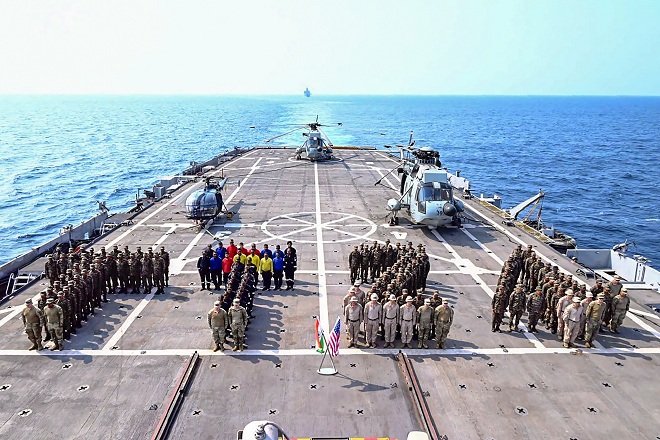
‘Technology is a non-linear tool’ as its benefits to society have a manifold impact and not directly proportional to its utility. This is all the more reason our scientists and faculty need to pursue a vision, not get bogged down by small things, asserts Defence Research and Development Organisation’s Chief Controller (Research and Development) and CEO & MD of BrahMos Aerospace Dr. A Sivathanu Pillai, with an uncommon touch of realism...
Excerpts from an exclusive interview with Dr. AS Pillai published in the Deccan Herald (DH).
DH: As one part of the IGMDP from its early days, where has India’s missile programme reached now?
Dr. AS Pillai: You see, missile systems like Prithvi, Agni, all indigenously developed by DRDO, have already gone into production. They are also strategic systems. Newer variations like Agni-1 to Agni-4 have also come, besides variations in Prithvi (short-range ballistic missile) too. Akash (the medium range surface-to-air missile) has also gone in for production. Naag (third generation anti-tank missile) has completed development trials and will go for user trials this year. All these technologies have been developed with indigenous capability. So much so, today we are strong in any type of missile because of the IGMDP and we can also develop any type of missile in the future. We have developed the technology and (manufacturing) capability for them in the country. I would say it is a leap in our (national) security and defence production.
DH: What about ‘BrahMos’ for which your contribution is particularly hailed?
Dr. AS Pillai: The new project ‘BrahMos’, under the Indian-Russian joint venture, BrahMos Aerospace which I head, uses the guidance technology with some improvements from the IGMDP missile-systems. After successful trials, BRAHMOS has been inducted into the Indian Army and Navy. Our Army is the only army in the world now to have such a supersonic cruise missile for land attacks, with three times the speed of sound (3 Mach No), has a range of 300 km and is the fastest missile today in the world. Advanced versions of the BRAHMOS are also being developed.
DH: Has your efforts to network DRDO with other R&D labs, academic institutions and industry led to any new technological development?
Dr. AS Pillai: We have set up Centre of Excellence in several institutions including some universities and along with it development of people has come that is very critical. The technologies developed by them have been useful in various programmes. For example, the ‘acoustic sensors’ we developed through the universities and which we call ‘Sanjeevani’ for detecting lives under debris, was used during the Gujarat earthquake. We were able to save many precious human lives with it. Again at the Bharathiyar University in Coimbatore, Defence Minister A K Antony inaugurated a new joint Centre of Excellence, under the consortium approach, just a few days ago. They have an excellent group in physics who have developed ‘thin film’ technology, while another group in Bharathiyar University is very good in physiological and life science aspects. Based on their expertise, DRDO has teamed up with that university to set up that Centre of Excellence. They will do the basic research for realisable products later. For instance, one such product coming out could be ‘bio-sensors’ to make all life-support systems at high altitudes for our soldiers in future.
DH: Any purely civilian spin-offs from our integrated missile programme?
Dr. AS Pillai: Of course, there have been many such civilian spin-offs. One major breakthrough societal product has been the cost-effective light weight calipers for polio-afflicted children of our country. Earlier the calipers were very heavy, weighing 3 kg for polio patients. But with use of some high-strength composite materials developed under the IGMDP, the team led by me at DRDO reduced the weight of those calipers to just 300 grams. These new light-weight calipers at half their original price have been given to about 30,000 polio-hit kids already across the country.
DH: How do you think labs under our university system can be re-energised towards basic science research, the clamour of Nobel laureates?
Dr. AS Pillai: We need to give a proper working environment for our young scientists and researchers. Universities need to find those areas which are unexplored and professors should encourage their young students to explore them. You put our Youth in such areas and they will come up with the solutions. Today there are several mission-mode projects not only under DRDO, but also under ISRO, environment-friendly ‘solar power mission’ and so on, which universities can get into. Funds are not the constraint for research. But that is a culture we will have to develop.
 Previous Article
Previous Article Next Article
Next Article













The Indian Air Force, in its flight trials evaluation report submitted before the Defence Ministry l..
view articleAn insight into the Medium Multi-Role Combat Aircraft competition...
view articleSky enthusiasts can now spot the International Space Station (ISS) commanded by Indian-American astr..
view article